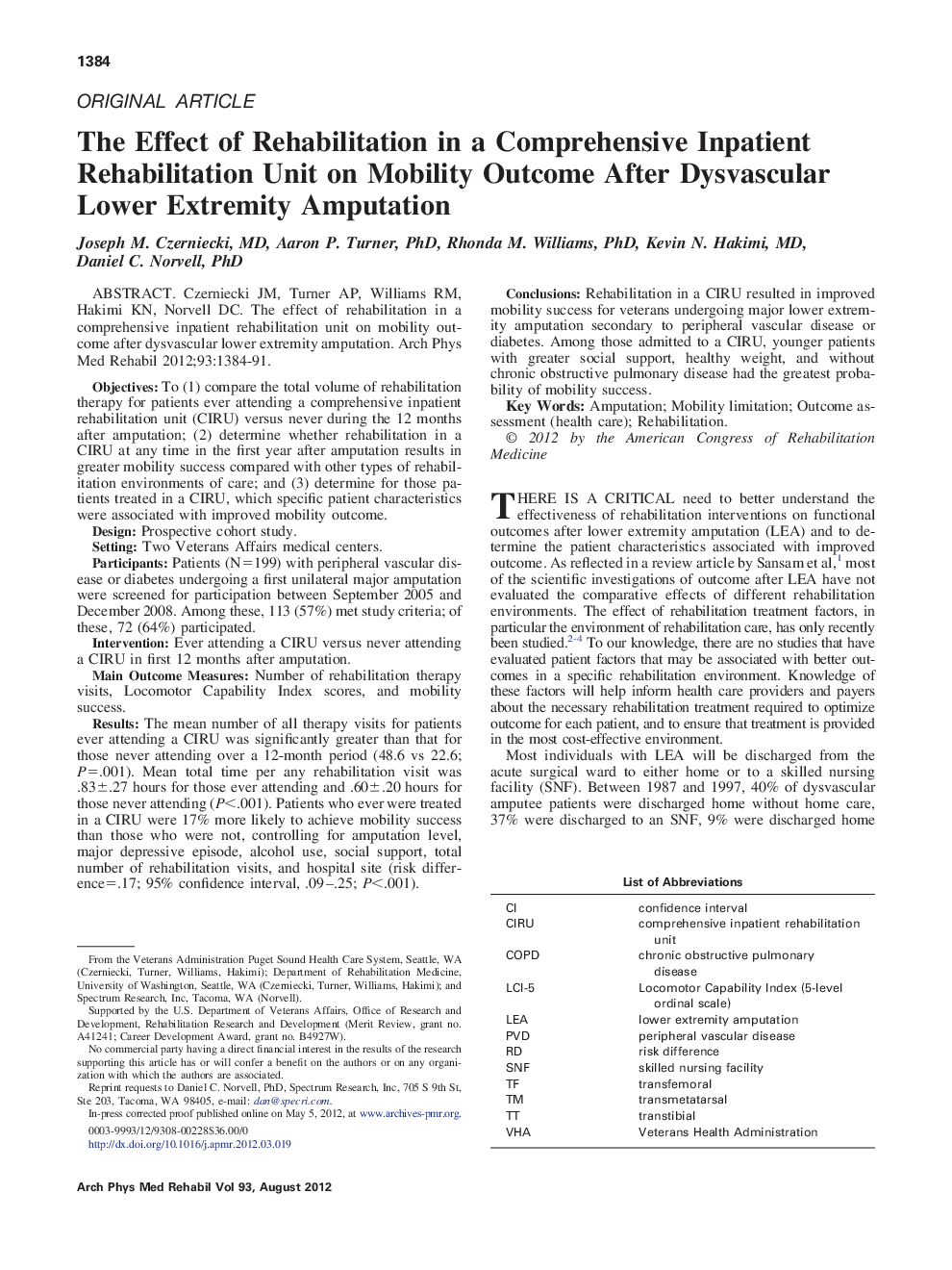| کد مقاله | کد نشریه | سال انتشار | مقاله انگلیسی | نسخه تمام متن |
|---|---|---|---|---|
| 3449561 | 1595722 | 2012 | 8 صفحه PDF | دانلود رایگان |

Czerniecki JM, Turner AP, Williams RM, Hakimi KN, Norvell DC. The effect of rehabilitation in a comprehensive inpatient rehabilitation unit on mobility outcome after dysvascular lower extremity amputation.ObjectivesTo (1) compare the total volume of rehabilitation therapy for patients ever attending a comprehensive inpatient rehabilitation unit (CIRU) versus never during the 12 months after amputation; (2) determine whether rehabilitation in a CIRU at any time in the first year after amputation results in greater mobility success compared with other types of rehabilitation environments of care; and (3) determine for those patients treated in a CIRU, which specific patient characteristics were associated with improved mobility outcome.DesignProspective cohort study.SettingTwo Veterans Affairs medical centers.ParticipantsPatients (N=199) with peripheral vascular disease or diabetes undergoing a first unilateral major amputation were screened for participation between September 2005 and December 2008. Among these, 113 (57%) met study criteria; of these, 72 (64%) participated.InterventionEver attending a CIRU versus never attending a CIRU in first 12 months after amputation.Main Outcome MeasuresNumber of rehabilitation therapy visits, Locomotor Capability Index scores, and mobility success.ResultsThe mean number of all therapy visits for patients ever attending a CIRU was significantly greater than that for those never attending over a 12-month period (48.6 vs 22.6; P=.001). Mean total time per any rehabilitation visit was .83±.27 hours for those ever attending and .60±.20 hours for those never attending (P<.001). Patients who ever were treated in a CIRU were 17% more likely to achieve mobility success than those who were not, controlling for amputation level, major depressive episode, alcohol use, social support, total number of rehabilitation visits, and hospital site (risk difference=.17; 95% confidence interval, .09–.25; P<.001).ConclusionsRehabilitation in a CIRU resulted in improved mobility success for veterans undergoing major lower extremity amputation secondary to peripheral vascular disease or diabetes. Among those admitted to a CIRU, younger patients with greater social support, healthy weight, and without chronic obstructive pulmonary disease had the greatest probability of mobility success.
Journal: Archives of Physical Medicine and Rehabilitation - Volume 93, Issue 8, August 2012, Pages 1384–1391